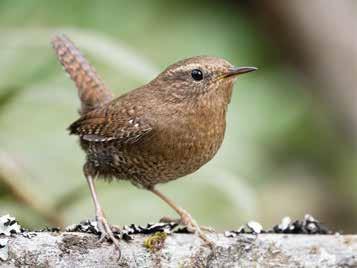
1 minute read
Are Birds the Key to Happiness?
Terence Miranda is a Doctor of Audiology and the owner of Resonance Hearing Clinic
Researchers from the Goethe University in Frankfurt analyzed data from 26,000 adults across Europe from the 2012 European Quality of Life Survey. They found that diversity in nature, especially in birds, had the greatest influence on people’s moods. In general, people were more than 50% happier from a 10% rise in bird species than they were with a 10% rise in their income. According to the World Bird Database, we have 298 species of birds in the Cowichan Valley! The frequency (pitch) of birdsongs is unique to the species of bird. The “hoo hoo-hoo” of the Barred Owl or the “rat ta tat tat” of the Pileated Woodpecker is quite different (and of lower frequency) than the high pitched “chirp-chirp” of the Rufous Hummingbird or “cheep-cheep” of the Yellow Warbler. The majority of the birdsongs in the Cowichan Valley however, are higher pitched. The most common causes of hearing loss, such as losses that are age-related or due to noise exposure, are high frequency hearing losses. Often, people with hearing loss may be hearing some of the birds, but not all of them. Given the number and variety of birds in the Valley, it’s hard to know what we are missing.
Advertisement
Our sense of hearing is often overlooked when we consider our overall health and happiness. We know that the majority of people with significant hearing loss don’t seek expert care when it comes to their hearing. People may be missing a connection with nature that only comes from being able to hear our resident wildlife. Add to that the trickle of a stream, rushing of a waterfall or the fluttering of leaves in the trees, our auditory connection with nature is as important as our visual connection. The effect it has on our wellbeing can’t be beat, even by a significant rise in our pension or paycheck.
Image above; The Pacific Wren. Its birdsong is 4-9 kHz.











